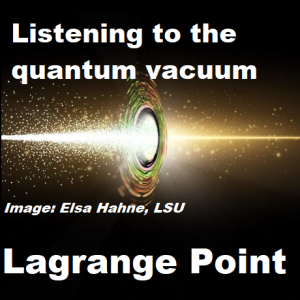Episodes

Monday Apr 29, 2019
Monday Apr 29, 2019
Hunting for missing dark matter or gravitational waves involves incredibly precise measurements. Scientists are constantly developing new measurement techniques to try and find new sources of data and test theories. Whether it be staring at the space between Andromeda and the Milky Way to find primordial black holes, to looking in the remnants of a white dwarf using spectroscopy. Plus ways to make the newer generation of gravitational wave detectors more accurate by listening to quantum noise.
References:
- Hiroko Niikura, Masahiro Takada, Naoki Yasuda, Robert H. Lupton, Takahiro Sumi, Surhud More, Toshiki Kurita, Sunao Sugiyama, Anupreeta More, Masamune Oguri, Masashi Chiba. Microlensing constraints on primordial black holes with Subaru/HSC Andromeda observations. Nature Astronomy, 2019; DOI: 10.1038/s41550-019-0723-1
- Christopher J. Manser, Boris T. Gänsicke, Siegfried Eggl, Mark Hollands, Paula Izquierdo, Detlev Koester, John D. Landstreet, Wladimir Lyra, Thomas R. Marsh, Farzana Meru, Alexander J. Mustill, Pablo Rodríguez-Gil, Odette Toloza, Dimitri Veras, David J. Wilson, Matthew R. Burleigh, Melvyn B. Davies, Jay Farihi, Nicola Gentile Fusillo, Domitilla De Martino, Steven G. Parsons, Andreas Quirrenbach, Roberto Raddi, Sabine Reffert, Melania Del Santo, Matthias R. Schreiber, Roberto Silvotti, Silvia Toonen,†, Eva Villaver, Mark Wyatt, Siyi Xu, Simon Portegies Zwart. A planetesimal orbiting within the debris disc around a white dwarf star. Science, 2019 DOI: 10.1126/science.aat5330
- Jonathan Cripe, Nancy Aggarwal, Robert Lanza, Adam Libson, Robinjeet Singh, Paula Heu, David Follman, Garrett D. Cole, Nergis Mavalvala, Thomas Corbitt. Measurement of quantum back action in the audio band at room temperature. Nature, 2019; DOI: 10.1038/s41586-019-1051-4
Version: 20241125


No comments yet. Be the first to say something!